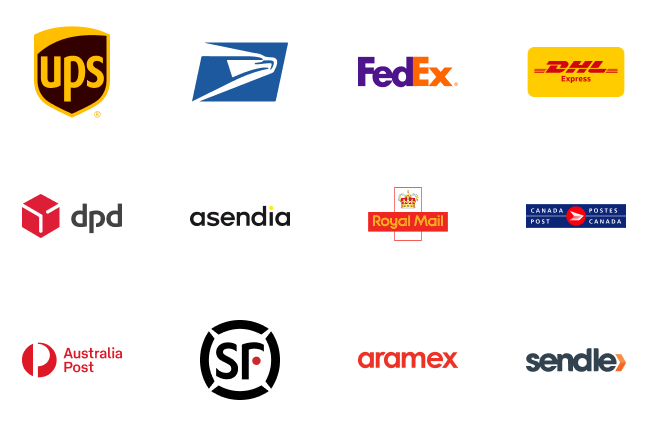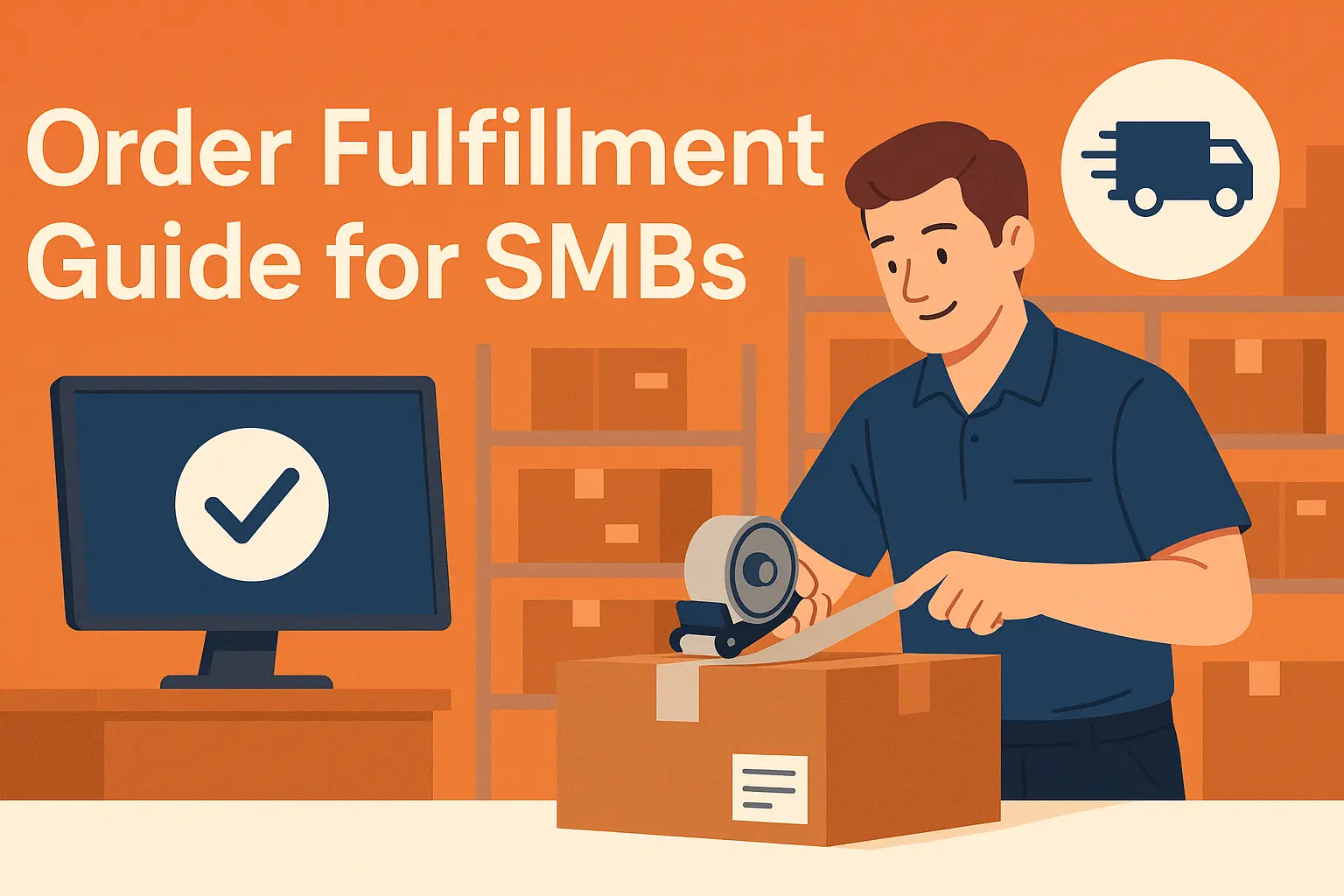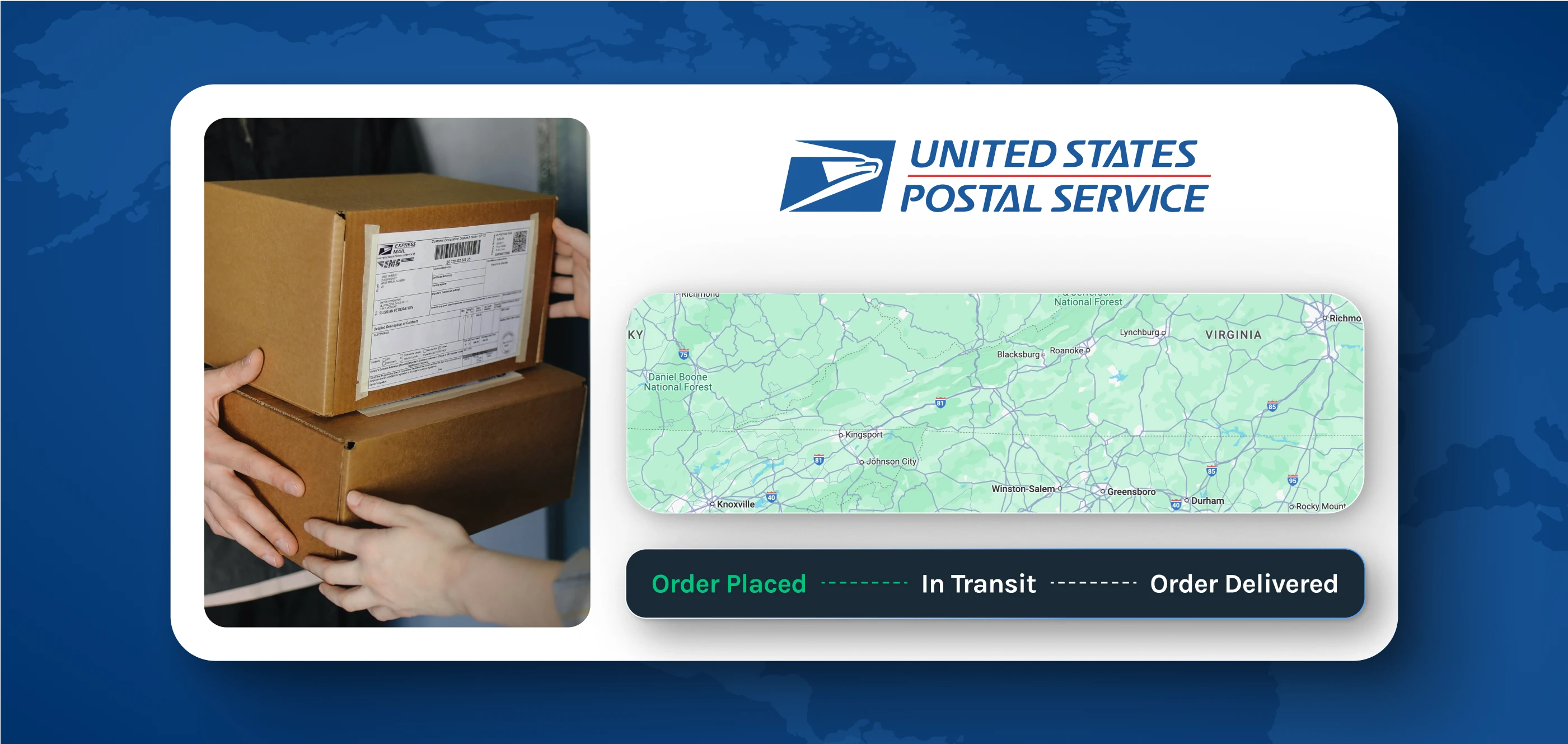On April 2, 2025, President Trump announced broad changes to global trade, enacting new U.S. import tariffs on almost every country.
These new policies significantly impact global eCommerce, potentially signaling the arrival of a new era of trade after close to 30 years of globalization and international shipping growth.
Following the initial announcement, tariffs update taken over the headlines—but what do they actually mean for eCommerce brands importing into the United States?
6 Important U.S. Tariff Updates for eCommerce Owners
Here's a summary of the most important updates that you need to know (as of April 10):
1. 10% Tariff Remains: The additional 10% tariff that went into effect on April 5 will remain in place for all countries (excluding Canada and Mexico), meaning extra costs for U.S. imports.
2. 90-Day Pause On Reciprocal Tariffs: All "extra" tariffs on U.S. imports, initially due to start on April 9, are paused for 90 days (excluding China).
3. 125% Tariff on Chinese Goods: In response to China's retaliatory tariffs (+84%), the U.S. has increased its tariff to +125% "effective immediately". This is on top of the 20% implemented on March 4 (totaling +145%).
4. EU Retaliatory Tariffs: While Europe was to implement retaliatory tariffs on April 15, these are also on hold for 90 days following the U.S. decision.
5. Section 321 Changes Imminent: The popular sub-$800 de minimis exemption for Chinese-made goods will still end on May 2.
6. Postal Service Updates: A new 120% ad valorem tariff, or a specific duty of $100 per postal item, will now apply for all postal items shipped from May 2 (increasing to $200 per postal item after June 1).
New Reciprocal Tariffs
For most countries, a minimum +10% tariff increase was applied to goods imported into the United States effective from April 5, 2025. As of April 10, this is still in place. At the same time, the U.S. also announced "reciprocal tariffs" on imports from about 60 more nations, adding between +11-50% to existing taxes and duties from April 9. This was later paused for 90 days to allow countries to negotiate the removal of tariffs, temporarily reverting to the flat +10% baseline increase.
As the world's largest manufacturer (around 34% of total output), China has been particularly targeted by this shift in policy, where a +34% tariff was applied to all Chinese-sourced imports to the U.S.
China Response & New +145% China Tariff
In response to the originallly proposed reciprocal tariff, China announced a proportionate 34% tariff back on U.S. goods imported into China effective from April 10, 2025.
Trump then implemented a further +50% tariff on China in response to the Chinese countermeasure, taking the effective tariff increase to +84% (34% plus a further 50%). In a sign of escalating tensions, China then responded with their own 84% tariff which was later increased again to match.
For Chinese goods, this significant +84% figure is on top of the existing +20% tariffs announced on March 3, 2025, effectively doubling the cost of Chinese-manufactured goods imported into the United States (20% plus 34% plus 50% = +104%) depending on the defined HS Code classification.
Following the 90-day pause announced for most countries, the tariff on China has now been raised to 145% (original 20% plus new 125% rate) as of April 10.
What this means for eCommerce
For eCommerce sellers that source their products in China, the arrival of a +145% increase in baseline taxes and duties payable when selling to U.S. consumers means much higher import costs, margin compression, and supply chain uncertainty.
These significant changes also apply to businesses that utilize Chinese-made inputs in their inventory production. Potentially requiring deep expertise in trade law, including compliance, tax, and duty obligations, to navigate the growing complexity and rapidly moving policy.
For small and medium-sized businesses seeking to understand how these changes impact their business and shipping into the United States, Easyship makes tariff compliance and tax and duty calculations simple. Automatically calculate tax and duties for every international shipment, access discounted shipping rates, and select the option to pre-pay (seller) or pay-on-arrival (buyer) for happier customers and more sales.
Summary Of Reciprocal Tariffs by Country
| Country |
U.S. Reciprocal Tariff |
IEEPA Tariffs |
Baseline T&D Calculation |
De Minimis Status |
| China |
125% |
20% |
By HS Code |
T86 Entry Ends May 2, 2025 |
| Canada |
- |
25% |
By HS Code |
Tariff Free Under $800 |
| Mexico |
- |
25% |
By HS Code |
Tariff Free Under $800 |
| Cambodia |
49% |
|
By HS Code |
Tariff Free Under $800 |
| Vietnam |
46% |
|
By HS Code |
Tariff Free Under $800 |
| Thailand |
36% |
|
By HS Code |
Tariff Free Under $800 |
| Taiwan |
32% |
|
By HS Code |
Tariff Free Under $800 |
| Indonesia |
32% |
|
By HS Code |
Tariff Free Under $800 |
| India |
26% |
|
By HS Code |
Tariff Free Under $800 |
| South Korea |
25% |
|
By HS Code |
Tariff Free Under $800 |
| Japan |
24% |
|
By HS Code |
Tariff Free Under $800 |
| Malaysia |
24% |
|
By HS Code |
Tariff Free Under $800 |
| European Union |
20% |
|
By HS Code |
Tariff Free Under $800 |
| Philippines |
17% |
|
By HS Code |
Tariff Free Under $800 |
| Singapore |
10% |
|
By HS Code |
Tariff Free Under $800 |
| Australia |
10% |
|
By HS Code |
Tariff Free Under $800 |
| United Kingdom |
10% |
|
By HS Code |
Tariff Free Under $800 |
| New Zealand |
10% |
|
By HS Code |
Tariff Free Under $800 |
Create a free Easyship account today to instantly calculate tariffs, taxes and duties for every country
How the New Tariff Rules Affect eCommerce Imports to the U.S.
Starting May 2, 2025, there will be major changes to how shipments from China (and Hong Kong) are taxed when entering the U.S. This is part of the broader Presidential plan to apply reciprocal tariffs in an attempt to close trade gaps. If you're importing products into the U.S., especially if you're sourcing from China, Hong Kong, or Macau, here’s what you need to know right now.
End of De Minimis (Sub-$800) Exemption for China
The Section 321 'de minimis' rule is a low-value exemption that lets U.S. shoppers and eCommerce sellers to import goods valued at under $800 without the need to pay duties.
Effective from May 2, 2025, President Trump has announced that the loophole will be closed for Chinese sourced or manufactured goods entering the United States.
This does not affect other countries—so shipments under $800 from Vietnam, Thailand, or South Korea will still qualify for duty-free treatment under the current duty-free de minimis threshold.
Related: Major U.S. Section 321 De Minimis Changes (May 2025)
For Shipments Over $800: Reciprocal Tariffs Apply
If your order is valued over $800, that’s when reciprocal tariffs kick in, regardless of shipping method used.
Even if you're not sourcing from China, HS code-based tariffs apply to all products listed in Annex II. If your shipment matches one of these codes, the additional ad valorem duty will apply.
For instance, if you import tools from Thailand valued at $1,000, you could face up to a 36% tariff—bringing your total import cost to $1,360 based on the initially proposed reciprocal figures.
What’s Still Unclear (But Being Monitored Closely)
- The U.S. Customs and Border Protection (CBP) and couriers have not released detailed, official guidance on how exactly these rules will be enforced.
- Tariff enforcement, especially on smaller parcels and for lower value eCommerce shipments, may vary depending on shipping partner, broker response, and customs clearance procedure.
- Stay in the loop by signing up to our shipping and logistics newsletter for all the latest news, updates and U.S. import changes.
What Are Reciprocal Tariffs & Why Are They Important?
Reciprocal tariffs are a type of import tax that mirrors the tariff rate other countries charge on U.S. goods. This is part of the Trump administration's broader push for "fair trade".
If foreign governments charge high import duties, implement "excessive" value-added taxes, or otherwise restrict the import of U.S. goods, the United States will now seek to proportionately match those reciprocal tariff rates. It's intended to stop trading partners from having an unfair advantage in the global economy while protecting U.S. goods in their own markets.
This shift is likely to raise prices for store owners who rely on global sourcing but could improve conditions for domestic manufacturers. Inevitably, it will result in higher prices for U.S. consumers in the short-to-medium term.
Related Post: How Trump’s Tariffs Impact Your eCommerce Business
What Triggered the 2025 Reciprocal Tariff Policy?
The Trump tariffs are a response to the U.S. goods trade deficit, which hit $1.2 trillion in 2024.
President Donald Trump's announcement declared this as a national emergency, with concerns over how the imbalance impacts manufacturing capacity and national security.
The administration argues that foreign trade barriers like non-tariff barriers, currency manipulation, and non-monetary trade barriers have disadvantaged U.S. businesses.
Using authority from the Trade Expansion Act and other trade laws, President Trump signed an executive order directing the United States Trade Representative to act. With a suite of major trade policy changes implemented by the new second-term President in the past two months.
Timeline: When Do The New Reciprocal Tariffs Take Effect?
There are two key dates: April 5, 2025, when the 10% universal tariffs begin; and; April 9, 2025, when the country-specific reciprocal tariffs begin.
These new tariffs are in addition to existing taxes and the previous tariff changes announced on March 3, 2025, and they increase tariff uncertainty for eCommerce businesses dependent on imports.
How Tariff Rates Were Calculated for Each Country
The tariff rates were calculated based on how much other longtime trading partners charge on U.S. exports, including added non-tariff barriers like restrictions, slow customs processes, regulations, and value-added consumption tax rates.
As widely reported and confirmed by the White House, the formula used to calculate the country-specific rates is:
τᵢ = (xᵢ - mᵢ) / (ε * φ * mᵢ)
To simplify this equation, this can also be represented as:
U.S. Discounted Tariff Rate = U.S. Exports To Country minus U.S. Imports From Country divided by U.S. Imports From Country divided by 2
For small businesses, especially those relying on free trade agreements, the new structure could force significant changes to unit pricing or sourcing models.
Using a tool like Easyship’s tax and duties calculator can help you with your cross-border shipping, ensuring that you stay compliant with the changing regulations.
Key Countries Affected by the Reciprocal Tariffs
These additional tariffs range from 11-50% and are on top of the existing rules for many of the United States longtime trading partners. Reciprocal tariffs as announced impacted about 60 nations, but are temporarily paused for 90-days based on the latest advice. This excludes China's new +145% rate as of April 10.
| Country |
Tariffs Charged To U.S. |
U.S. Reciprocal Tariffs |
| Saint Pierre and Miquelon | 99% | 50% |
| Lesotho | 99% | 50% |
| Cambodia | 97% | 49% |
| Laos | 95% | 48% |
| Madagascar | 93% | 47% |
| Vietnam | 90% | 46% |
| Sri Lanka | 88% | 44% |
| Myanmar (Burma) | 88% | 44% |
| Falkland Islands | 82% | 41% |
| Syria | 81% | 41% |
| Mauritius | 80% | 40% |
| Iraq | 78% | 39% |
| Guyana | 76% | 38% |
| Bangladesh | 74% | 37% |
| Serbia | 74% | 37% |
| Botswana | 74% | 37% |
| Liechtenstein | 73% | 37% |
| Reunion | 73% | 37% |
| Thailand | 72% | 36% |
| Brazil | 70% | 35% |
| Bosnia and Herzegovina | 70% | 35% |
| China | 67% | 34% (now +125%) |
| North Macedonia | 65% | 30% |
| Taiwan | 64% | 32% |
| Indonesia | 64% | 32% |
| Fiji | 63% | 32% |
| Angola | 63% | 32% |
| Switzerland | 61% | 31% |
| Libya | 61% | 31% |
| Moldova | 61% | 31% |
| South Africa | 60% | 30% |
| Nauru | 59% | 30% |
| Algeria | 59% | 30% |
| Pakistan | 58% | 29% |
| Norfolk Island | 58% | 29% |
| Tunisia | 55% | 28% |
| Kazakhstan | 54% | 27% |
| India | 52% | 26% |
| South Korea | 50% | 25% |
| Malaysia | 47% | 24% |
| Brunei | 47% | 24% |
| Japan | 46% | 24% |
| Vanuatu | 44% | 22% |
| Namibia | 42% | 21% |
| Côte d'Ivoire | 41% | 21% |
| Jordan | 40% | 20% |
| European Union | 39% | 20% |
| Nicaragua | 36% | 18% |
| Zimbabwe | 35% | 18% |
| Philippines | 34% | 17% |
| Malawi | 34% | 17% |
| Israel | 33% | 17% |
| Zambia | 33% | 17% |
| Mozambique | 31% | 16% |
| Norway | 30% | 15% |
| Venezuela | 29% | 15% |
| Nigeria | 27% | 14% |
| Equatorial Guinea | 25% | 13% |
| Democratic Republic of the Congo | 22% | 11% |
| Cameroon | 22% | 11% |
Some goods, like certain critical minerals, lumber articles, and pharmaceuticals, are exempt.
How Reciprocal Tariffs Affect Free Trade Agreements
Many sellers benefit from existing free trade agreements like USMCA or trade deals with South Korea and Japan. These agreements allow lower import duties or even duty-free access.
However, President Donald Trump’s new signed executive order overrides these in cases where the U.S. believes unfair treatment still exists. Items that don’t qualify under strict “rules of origin” may still be taxed.
If you rely on lower costs through free trade, review your suppliers' documents and ensure your products meet eligibility to avoid unexpected fees.
Global Reactions: Pushback from Allies and Trade Partners
The Trump tariffs have not gone unchallenged. Many allies, especially within the European Union, have spoken out.
- Some countries may introduce counter tariffs imposed on U.S. goods.
- Economists warn that retaliation could lead to an all-out trade war.
- Global markets may suffer as uncertainty slows shipping, production, and investment.
Moody’s predicts both U.S. and global recessions if trade ties weaken significantly. This could affect your ability to deliver low-cost shipping, especially through cross-border eCommerce channels.
What Comes Next: Monitoring, Modifications, and Long-Term Outlook
The United States Trade Representative is tasked with ongoing evaluations of:
- Whether foreign governments are complying
- The size of the trade deficit
- Economic health of domestic manufacturers
The tariff policy can change at any time. Countries that show progress may have duties reduced. Others could see increases if a trade deal fails or tariff rate consistent with fair trade is not reached. Staying on top of these changes by streamlining your shipping strategy using tools like Easyship can ensure that you sustain your profitability.
eCommerce store owners should:
- Watch and plan for tariff updates by staying up-to-date
- Implement cross-border shipping software like Easyship
- Diversify supply chains beyond Chinese-made manufacturing
- Expand to new non-U.S. markets to minimize trade impact
- Consider U.S. based 3PL, warehousing and fulfillment options
Ready to simplify and save on shipping?
Easyship is here to help.
Easyship helps eCommerce sellers stay profitable in a changing trade environment. With reciprocal tariffs, customs duties, and new rules for cross-border orders, our free shipping tools and smart dashboard are built to help you ship smarter and sell globally—without the stress.
Try Our Cross-Border Tools For Free:
- Automatic Tax & Duties Calculator: Get instant landed cost estimates—including import taxes, VAT, and tariffs—for 200+ countries, based on product type and destination.
- Pre-Paid Tax & Duties (DDP): Generate all required paperwork and choose to pre-pay or pass duties and taxes to customers—no surprise fees, no delays.
- Global Fulfillment Network (3PL): Store products closer to your customers with our trusted 3PL partners across North America, Europe, and Asia to reduce shipping time and costs.
- International Shipping Rate Comparison: Access 550+ couriers worldwide and automatically choose the best option based on speed, cost, and delivery reliability.
- Instant Rates, Tax & Duties At Checkout: Improve conversions and transparency by displaying real-time shipping costs, including duties and taxes, right at checkout.
Join 100,000+ sellers using Easyship to grow globally with confidence. Get started with Easyship for free today.
FAQs: Understanding Reciprocal Tariffs for eCommerce
Do reciprocal tariffs apply to low-value shipments under $800?
Yes—for shipments from China or Hong Kong. As of May 2, 2025, duty-free de minimis treatment ends, and new postal/import fees will apply even on low-cost items. Potentially increasing import costs by more than +145%.
How can I avoid unexpected tariff charges as a seller?
Stay informed about HS codes, origin countries, and current trade policies. Use tools like Easyship that show landed costs upfront so you can adjust prices and shipping options accordingly.
Can Easyship help automate tariff calculations and shipping adjustments?
Yes. Easyship dynamically calculates duties and taxes at checkout and offers pre-negotiated rates with couriers—helping sellers stay compliant and profitable under evolving global trade rules.
What is the new 10% baseline tariff and who does it apply to?
Starting April 5, 2025, a universal 10% import duty applies to all goods from all countries—unless the origin country already faces higher reciprocal tariffs or is covered by existing sanctions or exemptions. For example, Canada and Mexico are except.
What are reciprocal tariffs and which countries are affected?
From April 9, 2025, the U.S. will apply country-specific tariffs up to 50% on goods from 60+ countries, including China, Vietnam, India, and the EU. These are based on what those countries charge on U.S. exports (or a calculated equivalent). Based on the April 10, 2025 Presidential updates, these reciprocal tariffs are temporarily on pause for 90-days pending ongoing negotiations between world leaders and the President.
Is the Section 321 de minimis rule really ending for Chinese sourced goods?
Yes. From May 2, 2025, low-value shipments (under $800) from China will no longer qualify for duty-free entry—making small parcel imports more expensive for U.S. sellers and American consumers.
What are the new duties for postal shipments from China?
If you use USPS or other postal services, a new 120% (formerly 90%) Ad Valorem duty or $100 (formerly $75) flat fee per item now applies for items above $800 (to be decided on by the service provider)—the latter doubling to $200 (formerly $150) per item starting June 1, 2025.
Do non-postal courier shipments (UPS, DHL, FedEx) have different rules?
Yes. Non-postal shipments from affected countries are subject to the minimum 10% baseline tariff plus additional reciprocal tariffs, calculated by HS code and country of origin. Use a cross-border shipping tool like Easyship for an accurate calculation.
How can I manage all these tariff changes efficiently?
Easyship helps you automate taxes, duties, and customs forms across 200+ global destinations. Our tools calculate full landed costs and suggest the best courier for your budget and timeline.
IMPORTANT: The information provided in this blog is for educational purposes only and does not constitute legal, tax, or financial advice. Laws differ by jurisdiction and change regularly. You should not rely on this content as your sole source of information. If you have specific concerns, please consult a qualified professional.















































.svg)
.svg)







.avif)
.avif)

.avif)
.avif)


.avif)


.avif)










.avif)
.avif)



.avif)
.avif)


.avif)
.avif)


.avif)










.svg)








